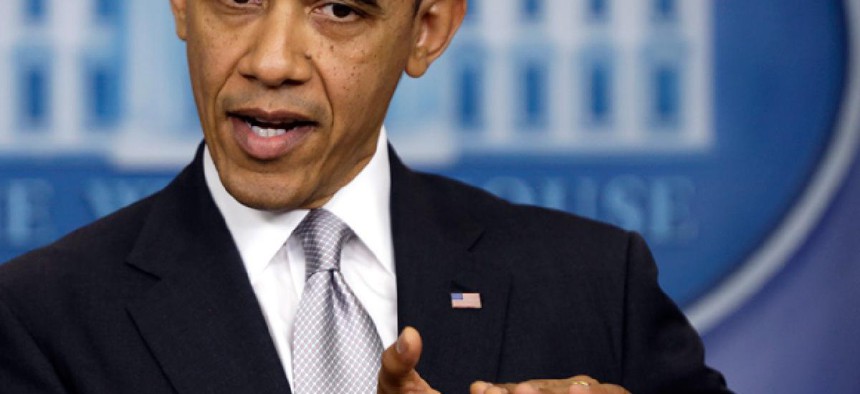
Charles Dharapak/AP
OMB: Furloughs are a last resort under sequestration
Administration says agencies won’t furlough employees immediately if spending cuts hit Jan. 2.
This story has been updated. Click here to view agency-specific information.
The Obama administration is telling agencies to talk to federal employees about the impact of sequestration, including the possibility of future furloughs.
The government will not start furloughing employees on or immediately after Jan. 2, if the automatic, across-the-board spending cuts take effect as scheduled, according to a Dec. 20 email from Office of Management and Budget Controller Danny Werfel to federal employee union leaders and agency officials. The email contains a list of talking points OMB wants agencies to use to communicate with employees about sequestration.
But agencies will have to consider furloughs and other personnel actions if they are forced to operate on tight budgets throughout the rest of the fiscal year as a result of sequestration, the email said. Werfel said agencies will examine other cost-cutting measures before resorting to furloughs or layoffs. “Moreover, if such action proves to be necessary, we would provide affected employees the requisite advance notice before a furlough or other personnel action would occur,” the email said. “We would also immediately cancel any scheduled personnel actions should a deficit reduction agreement be reached that restores our agency funding.”
Agencies so far seem to be sticking to the administration’s talking points outlined in Werfel’s email. In a memo to Interior Department employees obtained by Government Executive, Deputy Secretary David Hayes reiterated that furloughs would not happen immediately, but that the agency might have to consider them in the future if budgets remain lean. Hayes also defined sequestration, explaining the difference between the governmentwide automatic spending cuts embedded in the 2011 Budget Control Act and the lapse of funding that triggers a government shutdown. Agriculture Secretary Tom Vilsack sent a similar memo to employees.
The 2011 Budget Control Act mandated sequestration go into effect starting in January 2013 if the bipartisan congressional super committee failed to devise a deficit reduction plan. The automatic, governmentwide cuts will total about $1.2 trillion, spread evenly from fiscal 2013 through fiscal 2021, and would be divided equally between defense and nondefense spending. Specifically, sequestration would impose cuts of 9.4 percent in nonexempt defense discretionary funding and 8.2 percent in nonexempt, nondefense discretionary funding. The White House has exempted the entire Veterans Affairs Department from sequestration, in addition to some other programs and benefits.
The government needs to make about $109 billion in spending cuts for fiscal 2013. If sequestration occurs, federal agencies will only have nine months remaining in the fiscal year to make the reductions.
OMB and the Office of Personnel Management briefed federal employee union leaders on Wednesday night on the administration’s effort to formally communicate with government workers about the effects of a possible sequestration. Administration officials continued to emphasize that they are working with Congress to avoid the spending cuts. But the briefing and Werfel’s email is an acknowledgement that the clock is running out and employees need information.
National Treasury Employees Union President Colleen Kelley said she appreciated the administration’s efforts to work with unions as the situation unfolds, and provide employees with accurate information on the difference between sequestration and a government shutdown.
National Federation of Federal Employees President William Dougan also thanked government leaders for keeping unions in the loop, but emphasized that actions are more important than words. “It is critical that our lawmakers appreciate the gravity of this situation for federal employees and their families all across America,” said Dougan. “Sequestration could result in furloughs, RIFs [reductions-in-force], hiring freezes, or some combination of the three as agencies look to fill gaping holes in their already-strained budgets.”







